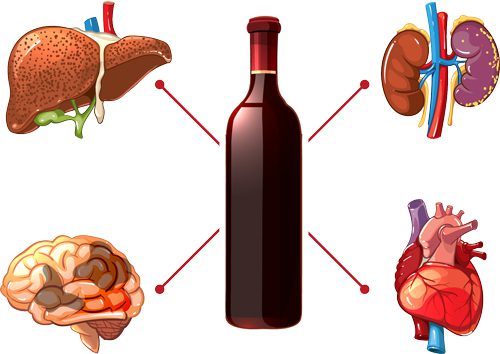 Alcohol’s effects on the body are numerous and wide-ranging.
Alcohol’s effects on the body are numerous and wide-ranging.
Side effects occur not only with long-term alcohol use or abuse, but also with light to moderate drinking over a period of time.
Many people drink alcohol because of its immediate effects on the central nervous system.
However, that relaxed and comfortable feeling will turn into an adverse reaction when too much alcohol is absorbed in the body. Slurred speech will occur, along with a decreased ability to think clearly. Coordination is also affected. Altered impulse control in the brain will often result in bad decision-making.Problems with liver function can result from excessive alcohol use. The liver is a cleansing organ in our body. It is designed to rid the body of impurities. Alcohol is a harmful toxin. When excessive amounts of alcohol have to be processed by the liver, it causes the liver to be overworked and can lead to impairment and disease.
The pancreas is also highly affected by alcohol. Alcohol turns into sugar in the body. Because the pancreas regulates glucose, it is negatively affected by harmful amounts of sugar.
The heart is literally the beating pulse of the body. It is adversely affected by alcohol, both chronic use and even episodic alcohol consumption. Excessive alcohol consumption can result in high blood pressure, strokes, and heart failure.
Many people do not realize that alcohol also affects their sex life. Because alcohol can inhibit hormone production, women’s menstrual cycles and men’s erectile function are affected. There have also been long-term studies on the effect of alcohol on the unborn child. With excessive alcohol consumption during pregnancy, physical and mental birth defects are common. The life of the child can also be affected by the development of learning disabilities and emotional issues.
It is undeniable that alcohol may be damaging to your body. Although the initial effect can be pleasant, the long-term effects are very harmful.
Reference:
Pietrangelo, Ann. The Effects of Alcohol on the Body. Retrieved April, 2017.




